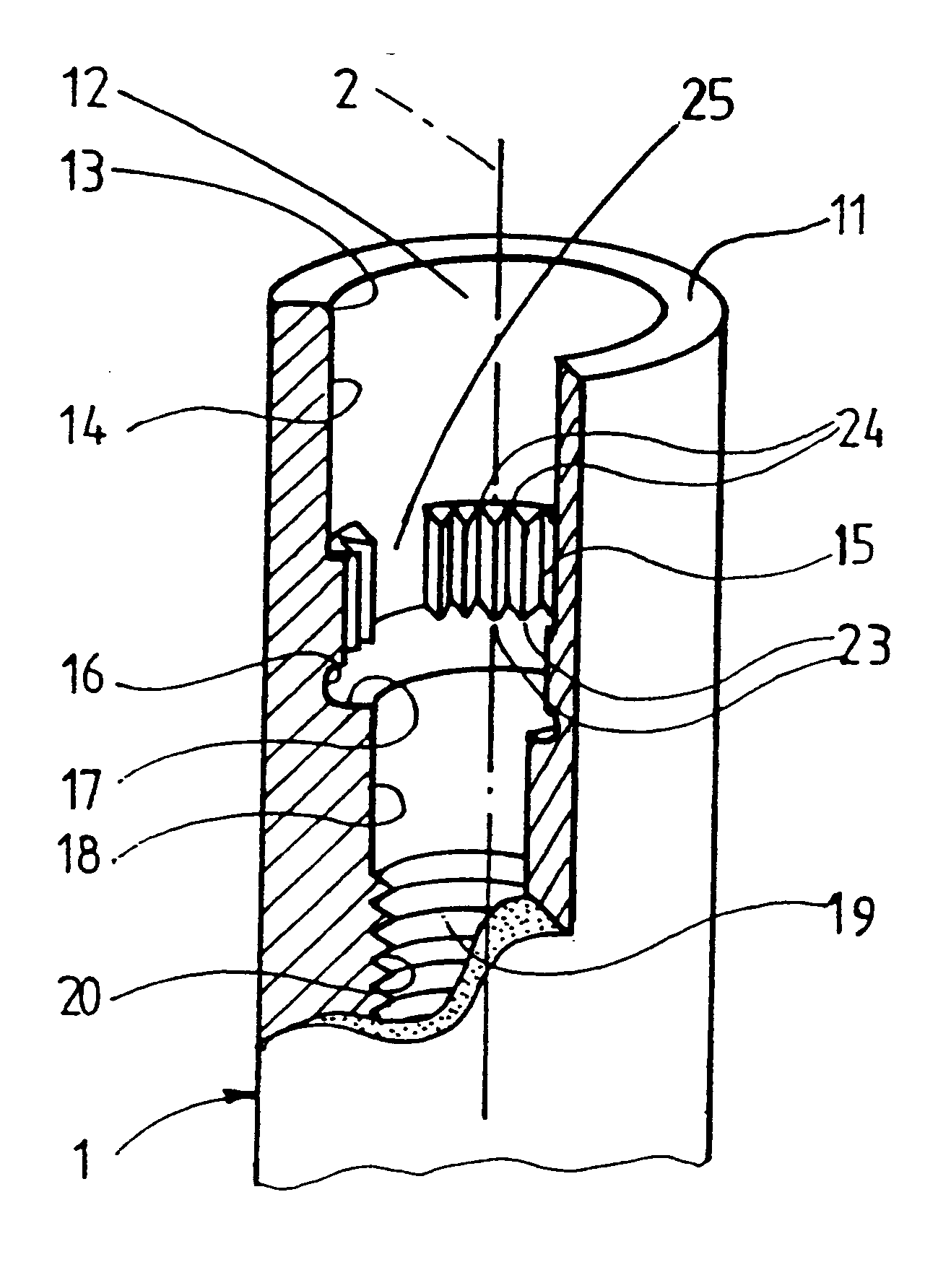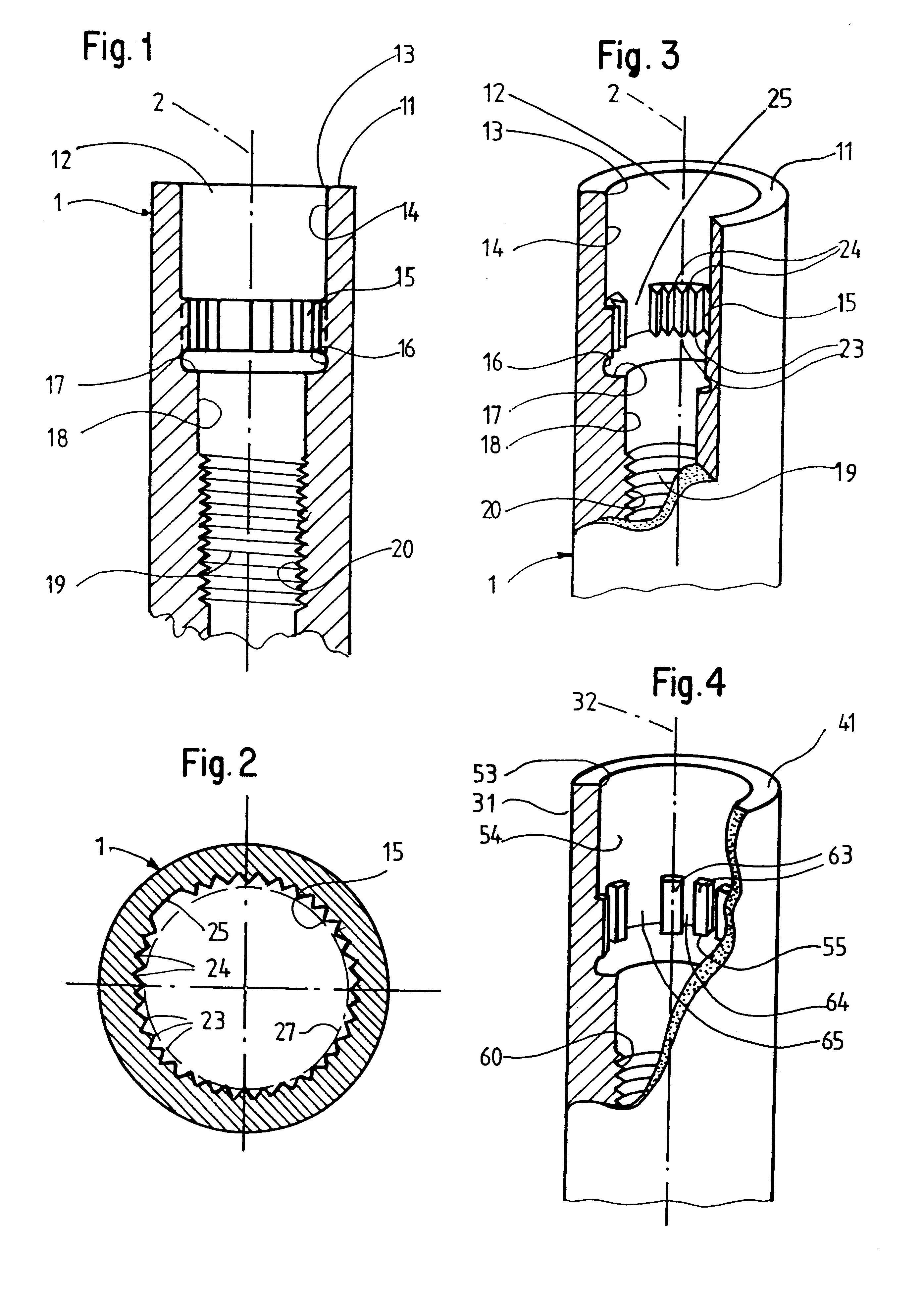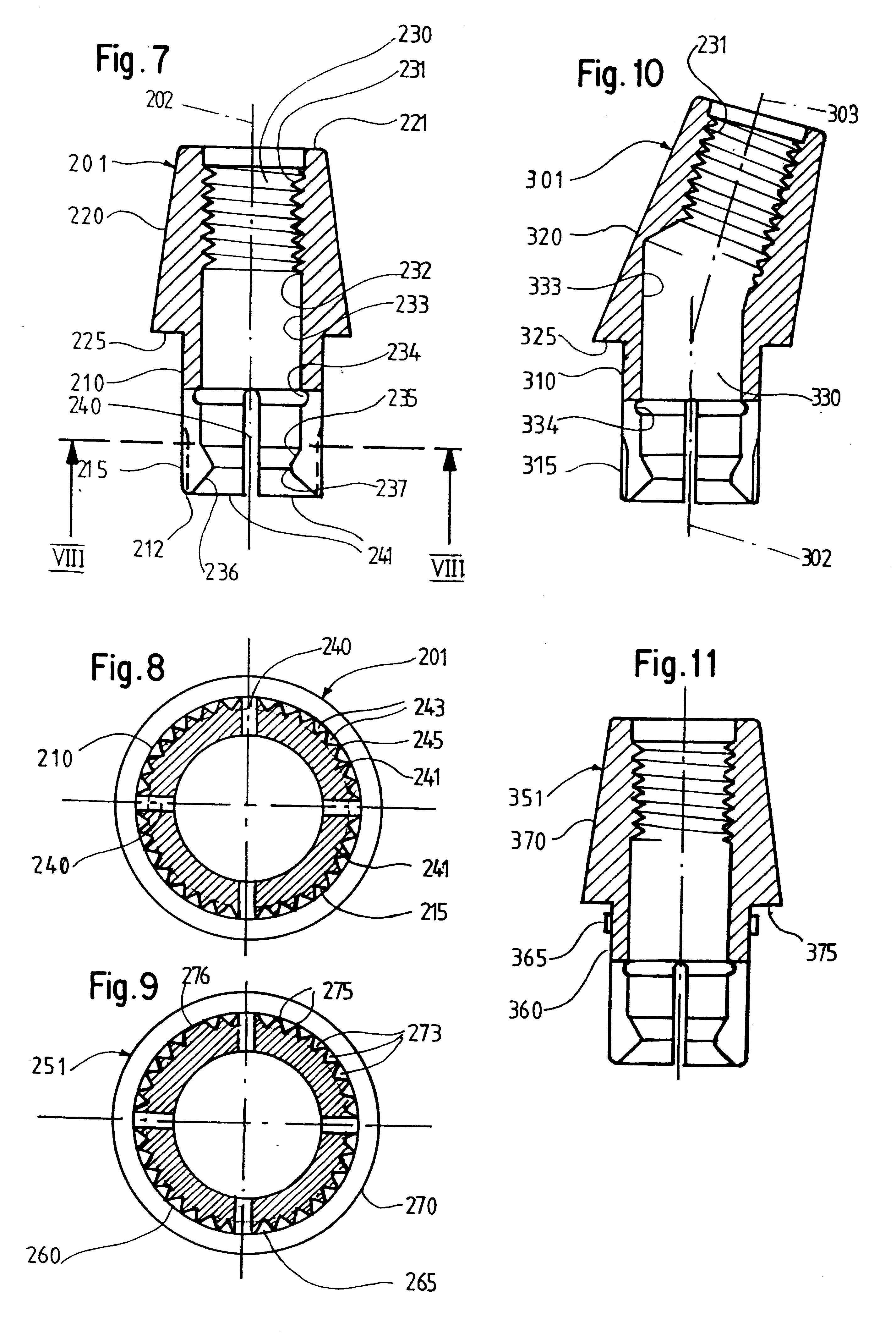The first and second interstices of the
dental implant according to the invention make it possible to fasten to one and the same implant secondary and / or superstructural components of optionally different configuration, which, depending on their configuration, are able to assume only a single rotational position defined by the positioning section of the implant, or which can assume a rotational position selected from several possible rotational positions, or whose rotational position is not defined by the positioning section.
Each interstice in the implant is defined preferably at least partially by flats which are approximately or precisely parallel to a straight line passing radially to the axis through the center of the interstice in question, or form with such a straight line an angle of at most 60.degree. and preferably no more than 45.degree.. Furthermore, each interstice has, for example, two substantially planar lateral surfaces. The interstices can be approximately V-shaped in cross section, or they can have also a base surface and be approximately U-shaped. The interstices can furthermore be substantially completely curved, and form an arc, for example, which is no more than equal to a semicircle and, for example, smaller than a semicircle. The projection, or every projection, of the secondary part and implant engaging in an interstice has a certain free play, so that in
spite of possible manufacturing inaccuracies and in
spite of dimensional changes caused by temperature changes, the projection can be inserted easily into the interstice. The free play of a projection, measured tangentially to the above-mentioned
pitch circle is preferably made so small that the secondary or superstructural part can be turned back and forth by no more than an angle amounting preferably to no more than 2.degree., or better 1.degree., or even no more than 0.5.degree..
The blind bore of the implant has preferably an internal thread serving for the removable attachment of the secondary part. If the secondary part has a positioning section with a projection or, preferably, a plurality of projections, the secondary part can be releasably fastened to the implant with an external thread which can be screwed into the internal thread of the implant. The fastening means can consist, for example, of a screw with a head urged against a surface of the secondary part, or of a headless screw which can be threaded into the secondary part. The headless screw can then have, in addition to the external thread which can be screwed into the internal thread of the implant, an external thread which can be screwed into an internal thread in the secondary part, and one of the external threads can be right-handed, for example, and the other left-handed, and / or the two external threads can have different pitches. To attach a secondary part to provide positioning, therefore, only a single additional element is needed, namely the said fastening means. If the secondary part, however, has no projection designed to engage a positioning groove in the implant, the secondary part can either also be fastened releasably to the implant, likewise with a separate fastening means of the kind described, or it may be provided with an external thread which can be screwed into the internal thread of the implant and consists, together with the remaining sections of the secondary part, of a one-piece body. Possibly a secondary part can also be provided which is fastened to the implant, not by screwing, but one which when used is first inserted releasably into the hole in the implant, and then, when it must no longer be removed, it is cemented or glued in the bore in the implant. The bore in the implant can then nevertheless have an internal thread so that the same type of implant can also be used to accommodate a threaded secondary part. If desired, however, the internal thread can be omitted from the implant. The secondary part can be joined securely and free of micromovements to the implant by the above-described screwing, cementing or gluing methods, so that in a physiological environment, it will not loosen due to micromovements.
 Login to View More
Login to View More  Login to View More
Login to View More 


